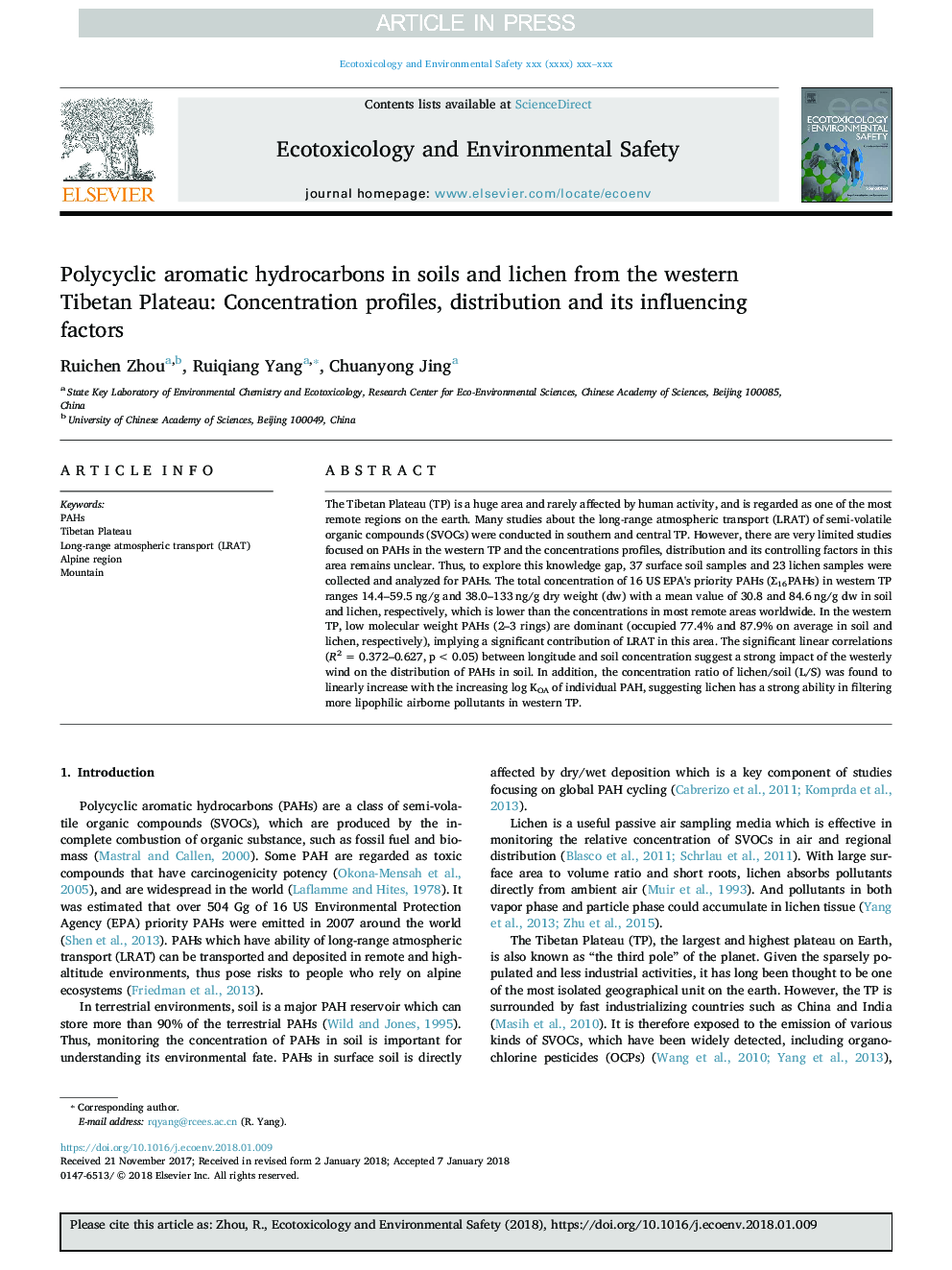| Article ID | Journal | Published Year | Pages | File Type |
|---|---|---|---|---|
| 8854251 | Ecotoxicology and Environmental Safety | 2018 | 8 Pages |
Abstract
The Tibetan Plateau (TP) is a huge area and rarely affected by human activity, and is regarded as one of the most remote regions on the earth. Many studies about the long-range atmospheric transport (LRAT) of semi-volatile organic compounds (SVOCs) were conducted in southern and central TP. However, there are very limited studies focused on PAHs in the western TP and the concentrations profiles, distribution and its controlling factors in this area remains unclear. Thus, to explore this knowledge gap, 37 surface soil samples and 23 lichen samples were collected and analyzed for PAHs. The total concentration of 16 US EPA's priority PAHs (â16PAHs) in western TP ranges 14.4-59.5Â ng/g and 38.0-133Â ng/g dry weight (dw) with a mean value of 30.8 and 84.6Â ng/g dw in soil and lichen, respectively, which is lower than the concentrations in most remote areas worldwide. In the western TP, low molecular weight PAHs (2-3 rings) are dominant (occupied 77.4% and 87.9% on average in soil and lichen, respectively), implying a significant contribution of LRAT in this area. The significant linear correlations (R2 = 0.372-0.627, p < 0.05) between longitude and soil concentration suggest a strong impact of the westerly wind on the distribution of PAHs in soil. In addition, the concentration ratio of lichen/soil (L/S) was found to linearly increase with the increasing log KOA of individual PAH, suggesting lichen has a strong ability in filtering more lipophilic airborne pollutants in western TP.
Related Topics
Life Sciences
Environmental Science
Environmental Chemistry
Authors
Ruichen Zhou, Ruiqiang Yang, Chuanyong Jing,
